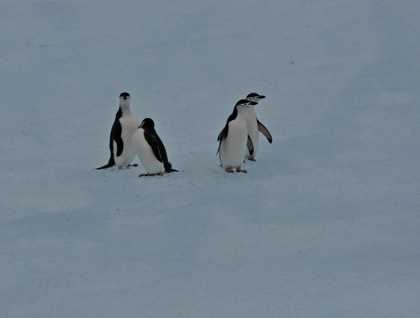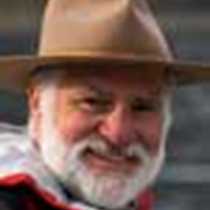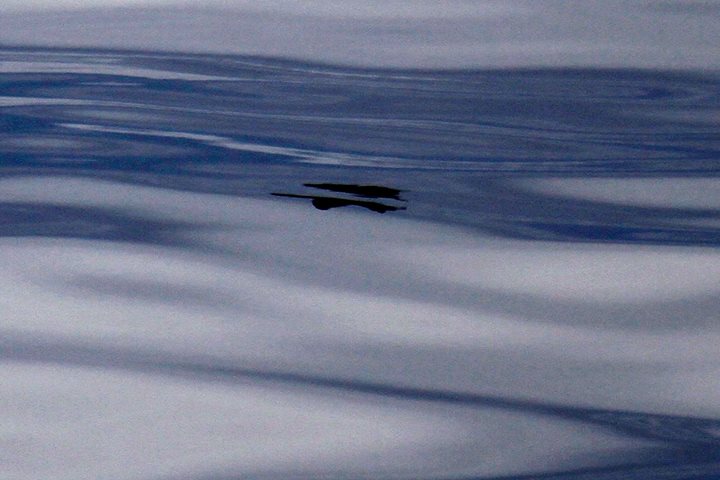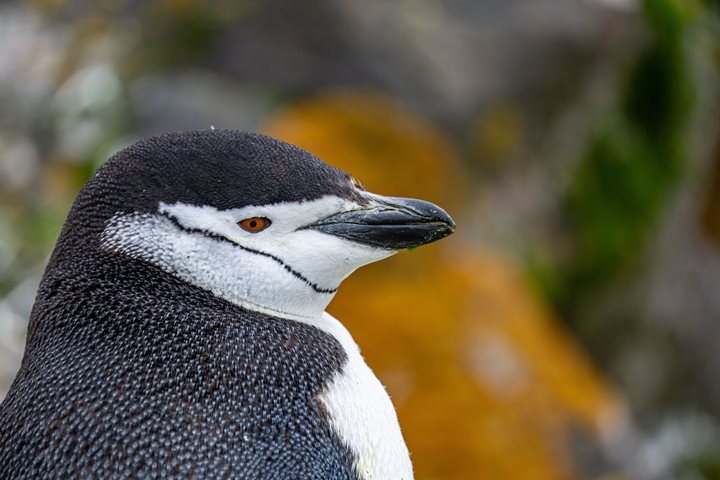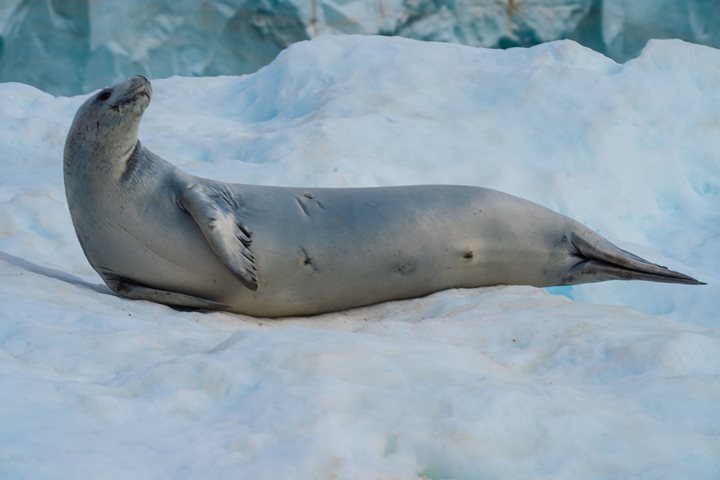In the early hours of the morning, the pitch from the ship’s engines varied and shortly thereafter so did the ship’s motion. Many of us were soon rocked back to sleep and later we learned that killer whales had been spotted and the research scientists had been lowered into the water to head off after them.
The new day greeted us with calm seas, a gentle breeze, all under grey skies. Conditions were ideal for a kayaking, which was to be one of the options for the morning adventures, the others being a visit to a small island and a Zodiac cruise.
The island, with an old Argentine Refuge hut dating back to December 1954, is home to a sizeable gentoo penguin colony and also to brown skuas and kelp gulls. After getting past the hut, today looking rather shabby, we came across one of the main parts to the gentoo colony. Many adults were already in full molt and others still feeding their ever-demanding chicks. We were surprised to even see a few penguins still incubating eggs; surely any chicks that may still hatch stand little chance of surviving the impending onset of colder conditions.
We were saddened by all the old drums, crates and other remains that have been left behind and which stick out starkly in this pristine place. Further on and over on the other side of the island there are many old whale bones strewn about the place as well as a water boat from the old whaling days. It is a reminder that in the recent past we have strongly impacted the wildlife of this place.
On the snow fields we spotted some Weddell seals hauled out and resting and along the shoreline a number of Antarctic fur seals, always feisty.
During lunch we headed for Cierva Cove and along the way come across some feeding humpback whales and spent some time with them. Nearby there was a very smooth large iceberg that was rocking in the swell and oftentimes sinking well into the seas and as it rose again huge quantities of green water cascaded off. What was really impressive to us all were the four chinstrap penguins on the top of this roller coaster and throughout the time we were with them standing as if they were fixed to the ice.
Once in Cierva Cove we headed off on Zodiac cruises and were bowled over by the indescribable beauty of the ice, which surrounded us in myriad shapes and hues of blue and white. There were also humpback whales and leopard and crabeater seals to be seen. All of this magnificence in an amphitheatre of cascading glaciers and steep mountain slopes.
From the ship we had close-up views of the glacier and from the high vantage point we were amazed at the large numbers of seals in this area, particularly the lithe leopard seals.
After dinner we entered the scenic Wilhelmina Bay and in the dimming light caught sight of many humpback whales busily feeding on the krill in these rich waters. During the evening recap we learned that the killer whale research scientists were able to tag one of those killer whales and carry out an extensive photo-identification of the large group.

